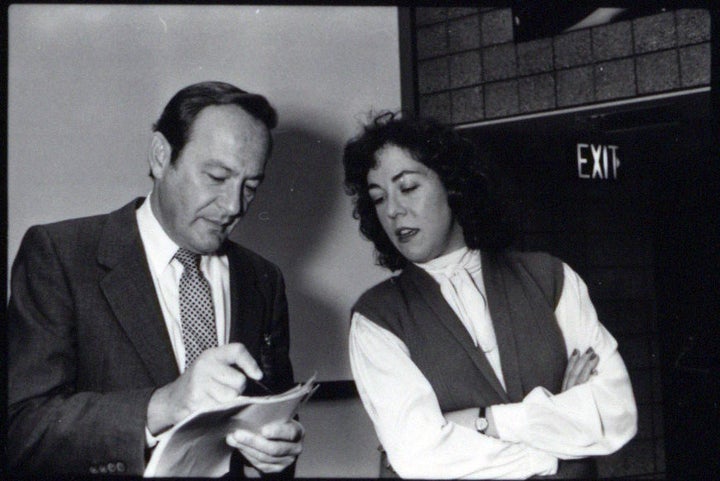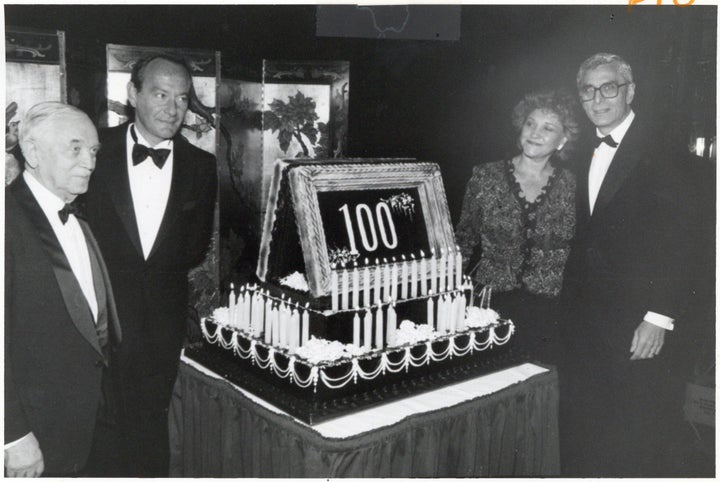
As New York City’s heroin epidemic escalated in the late 1960s, the city’s head of health services called a young public health doctor into his office. “I’m going to make you Mr. Methadone,” Gordon Chase told Dr. Robert Newman, who in addition to being young was barely acquainted with the word methadone at the time.
“Your job is to be able to offer every single person who wants treatment immediate treatment,” Chase instructed.
Despite Newman’s lack of experience, he would more than fulfill the expectations of his boss. Newman was able to grow New York City’s nascent methadone program to 10,000 patients in two years, and by 1975, 35,000 New Yorkers were enrolled in the city’s methadone maintenance program.
He devoted the rest of his life to advocating for evidence-based treatment for people with addiction in New York and around the world. Known as the “methadone pope,” he would become a diplomatic and empathetic ambassador of harm reduction ideas decades before they were in vogue.
In the wake of Newman’s death this month, at the age of 80, following being struck by a car in the Bronx earlier this summer, his legacy as the methadone maintenance pioneer and addiction advocate is once again coming to the fore.
“He was on the front lines of advocating for methadone, when no one else was talking about it, when it was taboo and unwelcomed,” said Kasia Malinowska, director of the Global Drug Policy Program at the Open Society Foundations, who described Newman both as a “rockstar” in the addiction community as well as a pragmatist.
“He thought that methadone was an effective, easy, cheap public health intervention; that it’s insane to deny it to people who are so deeply in need,” she said.
It’s because of Newman that people in the United States and in countries around the world have access to methadone, she explained.
“There are thousands and thousands and thousands of people who are Bob’s legacy,” Malinowska said. “They have access to treatment. They understand that public health is the way to deal with the problem that they have.”

Despite decades of scientific evidence showing that methadone is an effective treatment for heroin addiction, Newman faced opposition from abstinence and 12-step proponents throughout his career, as well as from policymakers like New York Mayor Rudy Giuliani, who tried to shut down New York’s methadone program in 1998 on the grounds that methadone was substituting one addiction for another.
Newman’s response to Giuliani’s short-lived crusade against methadone was characteristically diplomatic. In interviews, he stressed that methadone treatment allows people with addiction to lead productive lives and wrote emails to friends saying that arguing with the mayor wouldn’t accomplish anything.
“There have been plenty of times I’ve gotten into a fight with people I’ve been trying to convince,” Malinowska noted. “I’ve never seen Bob in that position. Ever.”
By 2011, as the modern opioid epidemic picked up steam, Newman forecasted the future of his decades’ work de-stigmatizing addiction.
“I’m hoping that pragmatism will win out,” he said. “As more and more Congresspeople, people in the general community and physicians have children who develop a problem with prescription drug use and can’t get treatment for it, I think it will make people more receptive to opening doors to treatment.”
Still, he noted, it was a tragedy that so much suffering and lives had to be lost in the learning process. “I’m afraid that that may, in fact, be necessary if there’s going to be a change in orientation.”
Although many drug users who want medication-assisted treatment are still unable to get it, mainstream support for addiction medicines has grown amid the destruction left by the opioid epidemic. In April, Food and Drug Administration Commissioner Dr. Scott Gottlieb matter-of-factly called methadone and related drugs buprenorphine and naltrexone “safe and effective.”
“He had such a profound belief in the human capacity for learning and the power of compassion. No matter how many times he saw a new version of an old injustice, he was outraged anew.”
- Lynn Paltrow, executive director of National Advocates for Pregnant Women
Newman did more than anyone else to make methadone maintenance treatment universally available, and was simultaneously a fierce critic of the methadone industry itself, explained Drug Policy Alliance founder Ethan Nadelmann, who met Newman in the 1990s.
When an individual treatment program or an association would put their own interests above those of the patients they served, “he was just as relentless at calling these guys out,” Nadelmann said.
That patient-centered ethos was a tenant of Newman’s own practice, said Lynn Paltrow, executive director of National Advocates for Pregnant Women. Early in Paltrow’s career, Newman sent her a letter complimenting a talk she’d given on pregnant women and drug use. He would go to advocate and fundraise for NAPW, including calling officials, writing letters and traveling to testify in person for women who were in danger of being incarcerated or losing their children because they were in methadone treatment.
But despite his roles as a city employee and hospital executive, Newman wasn’t afraid of unorthodox solutions to ensure patients had access to addiction treatment. When a private methadone clinic in New York City shut down in 1972, Newman started a methadone program on an out-of-use Staten Island Ferry boat, shuttling methadone back and forth to the ad hoc unit using his 1-year-old son’s stroller.
Decades later, he described the ferryboat clinic as crucial to the eventual success of the city’s program and one of the highlights of his professional career.

He stood up for patients again when the government wanted Newman to turn over patients’ methadone records to law enforcement. Instead, he went to court to defend his patients’ right to privacy and won.
“Not only was he passionate about this, but he was courageous,” said Tony Newman, Newman’s nephew and the director of media relations at Drug Policy Alliance. “He was totally willing and prepared to go to jail.”
Another major part of Newman’s legacy was his lifelong fight to humanize people with addiction and to classify addiction as a chronic disease, rather than a moral failing, an empathetic viewpoint that Paltrow thinks may have stemmed from his family’s own experience fleeing Europe just before Germany invaded Poland in 1939.
“He grew up with an understanding of how prejudice can be used to hurt people,” she said.
Newman steadfastly believed that patients didn’t have to taper off of their methadone regimens to be functioning members of society, and spoke about the pressure that patients faced ― and often internalized ― from their families and misguided methadone clinic providers to reduce their methadone dosages.
“There’s no moral judgment as to how much penicillin one uses to treat gonorrhea, and there shouldn’t be any moral judgment as to how much methadone a patient is receiving if the result is satisfactory,” Newman said in 2011.
In the final years of his life, Newman was still pushing for advertisements in every subway and newspaper for medication-assisted treatment, to ensure that everyone who wanted to addiction treatment could get it immediately.
“He had such a profound belief in the human capacity for learning and the power of compassion,” Paltrow said.
“No matter how many times he saw a new version of an old injustice, he was outraged anew. This was a man who did not know the meaning of the term ‘compassion fatigue.’”
